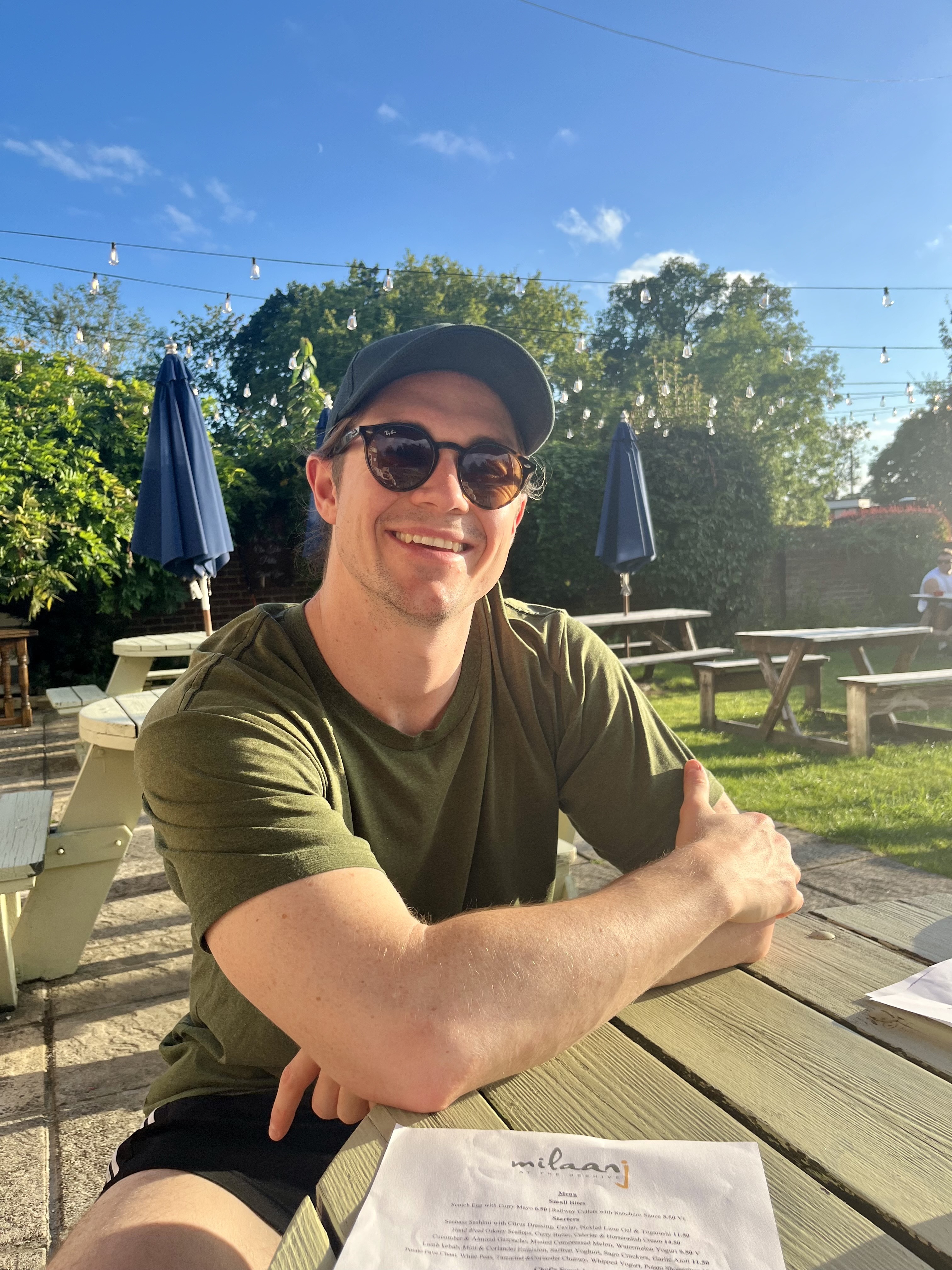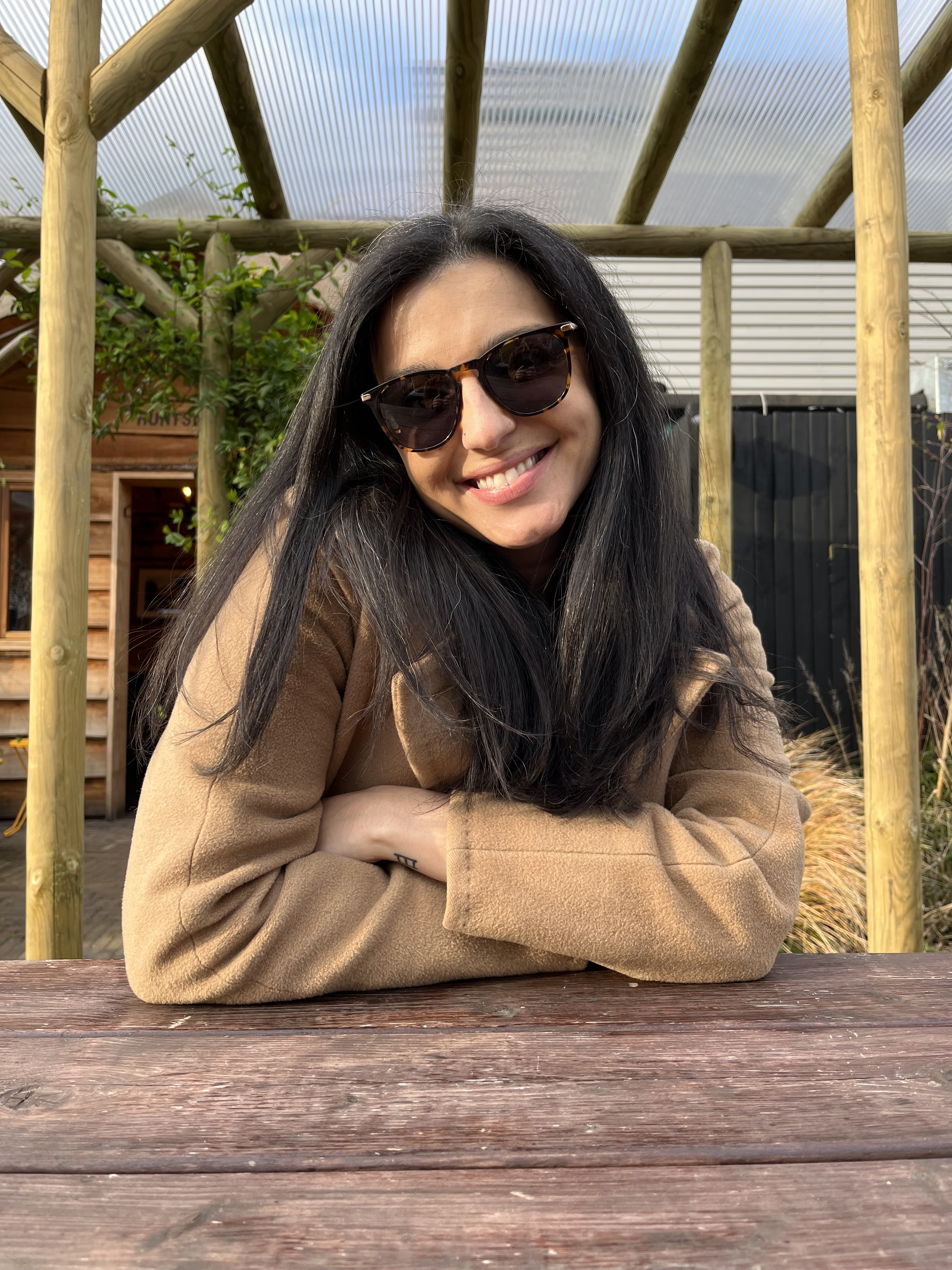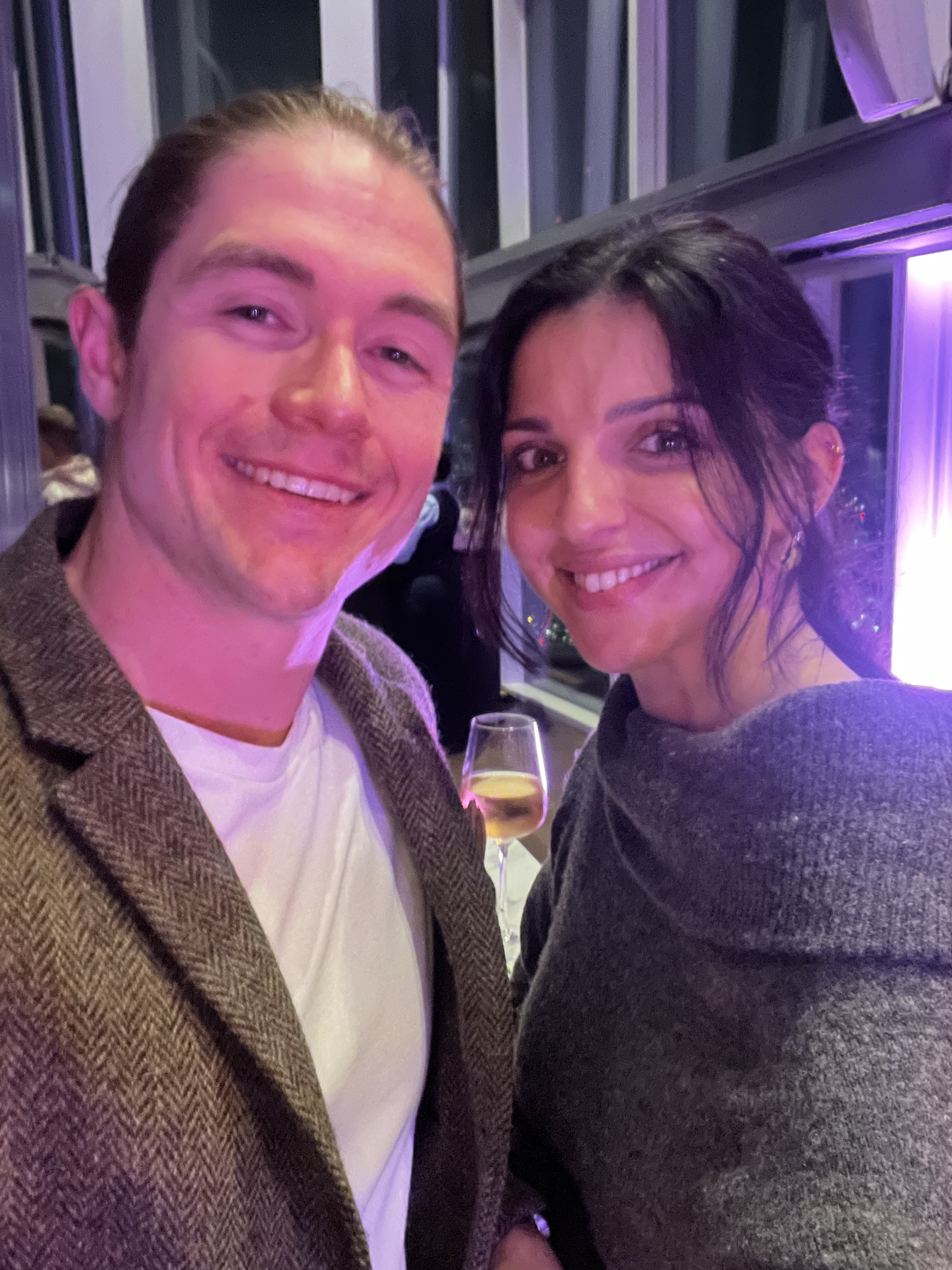One fertility journey, two points of view: “We’ve learnt that we both cope with trauma differently and sometimes have conflicting needs.”
In this blog, Lottie and Jake, members of our Patient Engagement Forum, discuss how they’ve experienced the same journey from two different perspectives.

Jake’s story
On 22 February 2023, nine months into trying to conceive - and while waiting to join a video call at work - I received a text that changed my life.
“Dear Mr Carlsson-Boyd,
Your semen analysis shows signs of infertility. Please call for a repeat sample to confirm.”
That was it, no warning, no further information, no clarity.
I shut my laptop and took myself to an empty room for literally one minute. I stared at my phone, took a deep breath, and then proceeded to completely ignore the message and join the meeting as if it were a normal day, having absolutely no clue how to deal with this news. I still struggle to read it to this day. It takes me right back to that room and whatever emotion I had buried in that moment.
I left work early and walked around Regent’s Park. My eyes filled with tears that I repeatedly swallowed. My greatest fear was being asked what was wrong and then having to explain my emotional state to someone by physically having to say the words “I’m infertile”.
Logic told me that ‘signs of infertility’ could mean a number of things, but logic had gone out the window.
My mind went straight to how I was going to tell Lottie: here it was, confirmed in black and white - I’ve failed you. All the sadness, the pain, the repeated exasperation… I can’t give you the thing you most desperately desire.
I was braced for tears and confusion from Lottie. I didn’t expect what came next…

Lottie’s story
By this point, we’d already noticed that we coped extremely differently with the struggle of trying for a baby. I wanted to take all my worries and thoughts and send them outward. I needed to talk, and I spent hours researching every little thing. I was constantly fearing the worst and saying these fears out loud, and learning as much as I could helped me cope.
Jake felt more positive and had a wonderful way of bringing me back to reality, but he couldn’t always give me the verbal outlet I needed. My need to discuss was at odds with his own needs for time and space to work through the pain of the negative tests each month. He felt we’d get there eventually if we just kept trying, so what was the point in discussing hypothetical scenarios or hearing about the experience of a couple I’d read about on a forum?
This day was different. We still reacted differently, but it was Jake’s turn to jump to the worst.
Calm. That’s how I felt standing in our living room when he showed me the text. It’s not that I thought he was overreacting, but more that I thought the text was unnecessarily harsh. I’d listened to enough podcasts and read enough articles to know that you could have a pretty ‘poor’ semen test result and still go on to conceive naturally. That was all it was, I assured him. It’s just that something in the test is slightly below normal, but that wasn’t a reason to panic. But the text alone was enough to convince Jake that there were no longer any babies in his future.
The irony isn’t lost on me that this was the one time I didn’t assume the worst, but Jake did.
Our story
It turns out we were both right. Sort of. It was indeed more serious than a below-average semen test, but all hope was not lost.
Five days later - a gruelling wait - the GP explained that Jake had azoospermia, a condition where there is no sperm at all. Not a low sperm count, but zero. At this point, we had no idea why or where this left us in our desire to become parents. Cue several more months of one of us frantically Googling and needing to verbalise every morsel of information gained, and one of us being pushed towards information overload.
We eventually discovered that Jake had been born without the vas deferens, the tubes that carry sperm out from the epididymis. In other words, the sperm was there, but it couldn’t get out. In our case, this was linked to Jake being a carrier for the Cystic Fibrosis gene, something we didn’t know until these investigations.
The solution - we were told by our consultant - was a surgical sperm retrieval. After this, we’d be able to do in-vitro fertilisation (IVF). There was still hope.
Although there was a year-long wait for the sperm retrieval surgery, we were extremely lucky that it was successful, something that wasn’t guaranteed. We were then able to proceed with IVF and again had luck on our side when we finally saw those two lines on the pregnancy test after our second embryo transfer.
Throughout this journey, we’ve learnt that we both cope with trauma differently and sometimes have conflicting needs. It’s just as important to know your own needs as it is to know your partner’s, and compromise is needed. For us, we need to balance just enough conversation and discussion, with time and space to reflect - and sometimes grieve - independently.
This knowledge, we hope, is helping us to set a solid foundation as we enter another patch of our lives where we’re sure to be tested again: parenthood.

About the authors:
Jake Carlsson-Boyd and Lottie Bates live in London with their dog, Arnie, and have been together for ten years. After trying naturally for almost a year, they received a diagnosis of azoospermia. Over the next two years, they underwent genetic testing, a surgical sperm retrieval, an egg collection and two embryo transfers. Their second transfer in January 2025 was successful, and they are now expecting their first baby. They are currently writing a book about their fertility journey from both perspectives.
Review date: 21 August 2027

